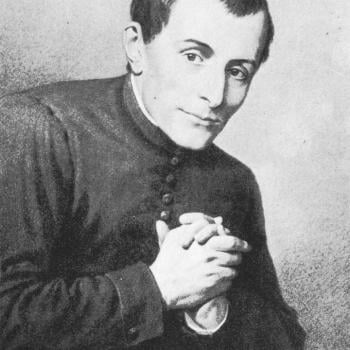At it’s core, the Church is a living thing, “vivified” by Christ (Lumen Gentium, 8). It is like a tree planted deep in the earth that sprouts up in every place, and brings forth life giving fruit to every culture, and like any living thing, it continues to grow and develop as new environments create new challenges and new climates to adapt to. The developments of human history are not intrinsically contrary to the life of the church, but can become new sources of life and prosperity. The Second Vatican council affirms this stating, “[the Church] ought to be enriched by the development of human social life”(Gaudium et Spes, 44). As the Church spouts up in new cultures, it is faced with both the challenges of a new climate and the richness of a new soil, with new nutrients, to draw life from. This central understanding of church, as a living and adapting community, is at the very heart of the Second Vatican Council.
Vatican II was in many ways a return to the task of cultivating a healthy living church. The Members of the council recognized that in the development of Christianity in the western world, certain expressions of the life of church had been elevated so highly that those expressions of the faith had become viewed by some as the only way that one could express the life the faith. In fact certain elements of the western tradition, like the use of Latin, could at times constitute “grave obstacles” to participation in the prayer of the church for some (Sacrosanctum Concilium, 101). The Church had become unable to express itself culturally, and liturgically in organic ways in many places of the world. The council rightly recognized that the life of the church had to conform to the ideal growing conditions of a particular time and a particular space. The vine’s of the kingdom of God were in need of a masterful gardener and the council attempted to partner with the Holy Spirit to find places to cut and other places to fertilize.
One of the key things that the council was able to recognize was that many cultures contain genius and talents that should be preserved rather than purged. This dynamic relationship is highlighted by the council when it states the Church should, “respect and foster the genius and talents of the various races and peoples” (Sacrosanctum Concilium, 37). These manifestations of genius and talent may have a rich heritage of christian use already, and should be honored and respected within the life of the One Holy Catholic and Apostolic Church. These bodies are in face “sister churches” (Unitatis Redintegratio, 14). However, many cultures do not have formal rites and churches that have developed naturally in their culture. In these cases, if the particular church sees fit, and if done in accordance with the provisions of the council. The Second Vatican Council instructs the leaders of those churches to incorporate the goods things found in their culture that can be brought into the worshiping life of the Church in it’s music (Sacrosanctum Concilium, 119), religious life (Perfectae Caritatis, 19) and even in the formation of it’s liturgy. This is what genuine inculturation looks like. It finds the places of life in the culture and invites them to enrich the mystical body of Christ (which is the church) in that place. As the council states, “[the Church] ought to be enriched by the development of human social life” (Gaudium et Spes, 44).
Another powerful affirmation of the council was that all people are called to belong to the new people of God. The mission of the Church is then to bring all humanity and all its possessions back to its source in Christ. As the council states, “ In the beginning God made human nature one and decreed that all His children, scattered as they were, would finally be gathered together as one” (Lumen Gentium, 13). This ecclesiological vision of the family of God is affirmed in the council as the operative lens through which all people and cultures must be seen. It is because of this understanding that the the council states that “the pilgrim Church is missionary by her very nature” (Ad Gentes, 2). The movement of the Church into other cultures is not something that it does, it is essential to what the Church is. All people find their source and their end in the life of God, and God’s life can be found at work in all peoples. The council, rightly, recognizes this reality and exhorts it’s leaders to “ lay bare the seeds of the Word which lie hidden among their fellows” (Ad Gentes, 11). This understanding highlights that there are no people who cannot offer God’s word to the Church, and there is no culture in which God has not extended the invitation to the life of the Kingdom of Heaven.
As the Church reflects of living out it’s missionary vocation 50 years after the opening of the Second Vatican Council, it is good to remember the call of the council to tend the gardens of the Church in each culture and setting that it blossoms in. The council reminds the mystical Body of Christ that it is the task and duty of the worshiping community to “open wider the doors of the Church by which the message of peace may enter the world” (Lumen Gentium, 36). This process is a difficult dance balancing the heritage of the Liturgy with the genius and talents of new contexts. It is a dance that requires liturgical nuance and ecclesial agility, but as the council reminds us if we keep our eyes on Jesus, there we will find “ the source of unity and peace” (Lumen Gentium, 9)













